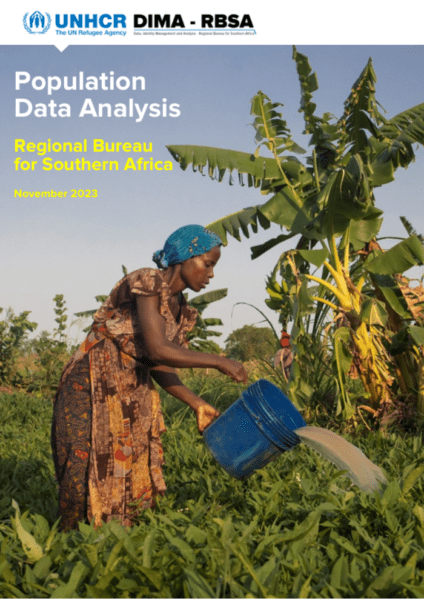Attachments
Overview By 30 November 2023, Southern Africa region hosts 9.9 million forcibly displaced populations. This includes 797,500 refugees, 187,600 asylum-seekers, 33,700 others of concern, and 6.9 million internally displaced populations (IDPs) who moved as a result of conflicts. To that figures, 1,800 refugees and 2 million IDPs were announced to be returned during the reporting period. In addition, 1 million IDPs have also moved owing to climate change and disaster. An increase by 271,000 individuals among the IDPs were noticed as from October 2023. It should be noted that the Democratic Republic of Congo hosts 83 per cent of the above-mentioned populations.
Outcomes of the Results Monitoring Surveys for Refugees and IDPs Most of the socio-economic data emanating from census, surveys, and governments sources do not include Refugees and Asylum seekers, except ROC1 and South Africa. Zambia and Malawi plan to include refugees in national surveys. For the region, one third of socio-economic data has been completed in ProGrès. The Results Monitoring Surveys (RMS) provide numerical data on the living conditions of Refugees and asylum seekers and include some indicators on the Sustainable Development Goal (SDG). Few RMS indicators cover health, shelter, financial services, land and property.
Access to health is high, except for Zambia with 24% of access rate as illustrated in the chart. Access to adequate and reasonable priced dwellings remains the biggest challenge for refugees and asylum seekers across the region, except in South Africa with a rate standing at 43%. Access to financial services is relatively better, but low in DRC (13%). Refugees and asylum seekers with secure access to land and property are few, except in the ROC (27%) and South Africa (35%). Zimbabwe recently completed its RMS and Angola is in the preparatory stage.
The outcomes of the RMS for IDPs demonstrated that access to health services is higher in Mozambique (82%), while only 5% of them are living in adequate dwellings, 6% have access to financial services and 9% secure land and other properties. As regards to the DRC where socio-economic surveys outlining the living conditions of IDPs was conducted in some provinces, less than 1% live in adequate shelter, while 15% have access to financial services.
Source link : https://reliefweb.int/report/democratic-republic-congo/population-data-analysis-regional-bureau-southern-africa-november-2023
Author :
Publish date : 2024-01-10 03:00:00
Copyright for syndicated content belongs to the linked Source.
